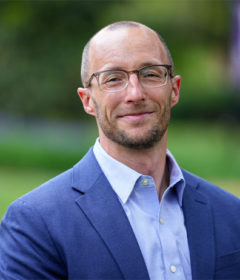Science Meets Art at Gillespie Museum, Hand Art Center
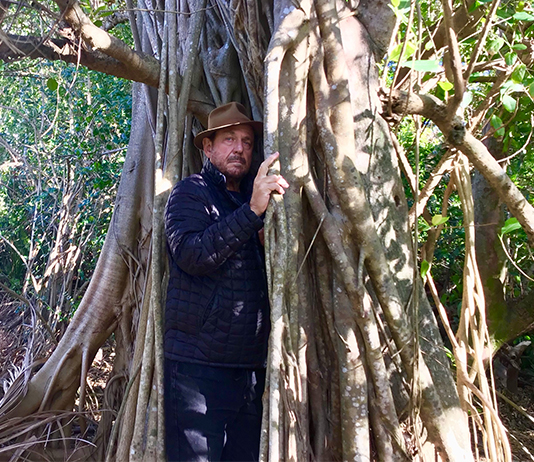
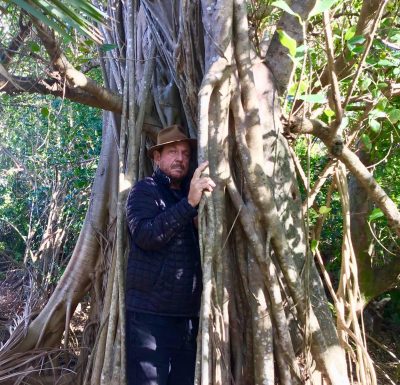
This past year, the COVID-19 pandemic revealed how vulnerable the world is to unexpected crises. The same can be said about the environment, which is fragile and impacted by overpopulation, pollution, burning fossil fuels and deforestation.
Environmental transitions are explored in land artist Alan Sonfist’s “Earth Pandemic” exhibits at the Gillespie Museum and Homer and Dolly Hand Art Center on Stetson University’s campus.
“The “Earth Pandemic” exhibits provide an awareness of our existence on the planet,” explains Sonfist. “We have to create a balance on Earth as a species in order to survive because if we don’t respect the environment, then we’ll disappear.”
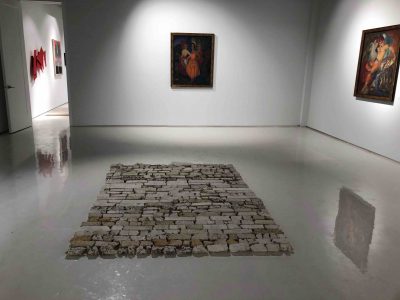
The Gillespie Museum installation will feature the “Earth Monument to South Florida,” March 2-31, a display showcasing geologic history and drillings from the substrate of the Florida peninsula. Cultural Credit will be available.
The installation is one in a series of stone sculptures titled “Corings: 1971-2012,” which is based on the geology of urban landscapes. The display features sculpture that Sonfist uses as his medium sediment along with geologic cores taken from zero to 150 feet below the surface.
Sonfist’s artistic vision can be seen in conjunction with the museum’s “Florida Formations: Shifting Seas and Sediments” exhibit, which allows visitors to consider the intersection of art and science, and to understand the geology of Florida’s landmass.
“Who better than to lead our reflections on the timeless beauty and fragility of the Earth than a pioneering land artist like Alan Sonfist, who has an abiding interest in science,” said Karen Cole, PhD, director of the Gillespie Museum.
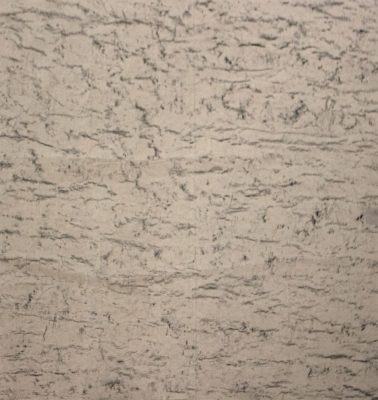
The Hand Art Center display, March 1-31, will include paintings from the “Surface Memory, 1967-1971” and “Earth Paintings” series. Cultural Credit will be available.
The “Surface Memory, 1967-1971” display will include more than 10 natural-resin-on-canvas paintings that feature ancient tree fingerprints. The tree-fingerprint artwork features the bark, limbs, roots and other parts of young and old trees from indigenous forests in the northeast. The paintings capture Sonfist’s childhood memories of the ancient oak trees that he climbed as a child in Bronx, New York, and illustrate the aging process of humans and trees with texture on the canvases that feature different stages of aging trees.
The “Earth Paintings” series was inspired by Sonfist creating human figures in the mud at the Bronx River as a youngster. The artwork features soil, mineral content and organic glue, which holds the earth onto the canvas. The paintings are also based on the earth’s magic as it dries, cracks and changes colors.
“Alan Sonfist’s atypical medium, including dirt, leaves and forest debris, is presented in typical fashion on canvas and paper adorning the gallery’s walls,” said James Pearson, MA, director of the Hand Art Center. “With this installation, Sonfist is both affirming his standing as a visual artist and inviting the viewer to contemplate earth as a medium.”
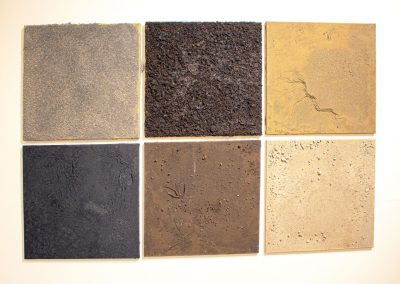
Sonfist, who has a Master of Arts in painting and sculpture from Hunter College in New York, has been creating environmental art since he was a young child.
He was invited by the Massachusetts Institute of Technology (MIT) to research and develop the concept of an ancient forest and create the idea of what is a forest and how does a person design a forest during the late 1960s.
Sonfist’s research led him to create the “Time Landscape” in New York City, which was his first large-scale, permanent land-art display. The project took 10 years to transform a concrete landscape into a forest, featuring plants and trees that were native to the area as well as southern species that would adjust well to a warmer climate because the temperature had evolved and increased since the city’s early days.
The environment, no matter the size, has a story to pass on to future generations. The Hand Art Center is contributing to the environment’s history by inviting the community to participate in Sonfist’s “Primitive Soil Time Capsule.”
The Hand Art Center is collecting, securing and storing two-inch soil samples free from other materials, such as leaves and debris, sealed appropriately for mailing from around the world through Sunday, May 9.
After the soil samples are received in the mail, they will be included in the “Primitive Soil Time Capsule” and displayed next to the Hand Art Center’s “Earth Pandemic” exhibit.
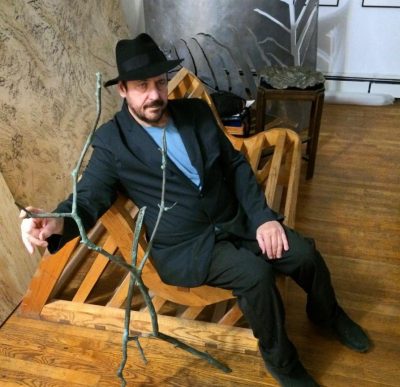
The primitive samples must be in a small container and include the approximate location where the soil was collected. Participants can also request a soil-collection container with a postage-paid envelope addressed to the Hand Art Center.
Stetson faculty, staff and students and the community can learn more about Sonfist and his artwork during a free livestreamed artist talk via Zoom on Tuesday, March 2, 5-6 p.m. The event is sponsored by the Artists and Lecturers Series, Gillespie Museum and Hand Art Center. Visit the Gillespie Museum and Hand Art Center’s websites for more information.
Guests may be allowed on campus to view the “Earth Pandemic” exhibits at the Gillespie Museum and Hand Art Center when COVID-19 pandemic restrictions are lifted at Stetson University. Admission is free. The exhibits also can be viewed online.
-Sandra Carr

